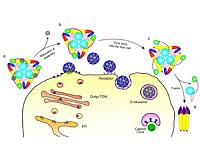 |
Washington (UPI) Dec 6, 2010 Molybdenum-99, essential for medical imaging, is being made for the first time from low-enriched uranium rather than weapons-grade material, U.S. officials say. The United States has received its first shipment of molybdenum-99 produced in this manner in South Africa, promising a more reliable supply while allaying fears of nuclear proliferation, a release by the National Nuclear Security Administration said Monday. Molybdenum-99 is used to make the radioactive tracer technitium-99m, used in thousands of noninvasive diagnostic scans every day, the release said. Until now, molybdenum-99 has been manufactured only from highly enriched uranium, which people worried could be stolen by terrorists from one of the foreign plants involved in the first stages of production. "It's a sitting duck for al-Qaida because these facilities are not guarded like military facilities, but they have bomb-grade uranium," Alan Kuperman, an expert in nuclear proliferation at the University of Texas, says. The highly enriched uranium used to make molybdenum-99 is a nuclear terrorist's dream, he says. "I'm talking about the identical material that's used in the U.S. to make nuclear weapons," he says. To further complicate matters, there's no molybdenum-99 made in the United States, which gets most of its supply from two aging reactors in Canada and the Netherlands. When both were shut down for maintenance and safety issues last summer, doctors and patients were left in the lurch. "The situation was very bad. Very bad," says Marcello Di Carli, chief of nuclear medicine at Brigham and Women's Hospital in Boston. Federal officials say they hope supply issues and worries about nuclear proliferation will soon become a thing of the past, now that NTP Radioisotopes Ltd., in South Africa, in a joint effort with the U.S. government, has figured out how to mass-produce molybdenum-99 using low-enriched uranium. "I would say by three to seven years, we should be extremely optimistic that international producers will get away from the use of highly enriched uranium for medical isotope production," Parrish Staples, with the U.S. National Nuclear Security Administration, says.
Share This Article With Planet Earth
Related Links Hospital and Medical News at InternDaily.com
 New Findings Detail How Virus Prepares To Infect Cells
New Findings Detail How Virus Prepares To Infect CellsWest Lafayette IN (SPX) Dec 03, 2010 Researchers have learned the atomic-scale arrangement of proteins in a structure that enables a virus to invade and fuse with host cells, showing precisely how the structure morphs with changing acidity to initiate infection. Findings from a team at Purdue University showed the protein structure in an acidic environment, and another team from the Pasteur Institute showed the same structure ... read more |
|
| The content herein, unless otherwise known to be public domain, are Copyright 1995-2010 - SpaceDaily. AFP and UPI Wire Stories are copyright Agence France-Presse and United Press International. ESA Portal Reports are copyright European Space Agency. All NASA sourced material is public domain. Additional copyrights may apply in whole or part to other bona fide parties. Advertising does not imply endorsement,agreement or approval of any opinions, statements or information provided by SpaceDaily on any Web page published or hosted by SpaceDaily. Privacy Statement |